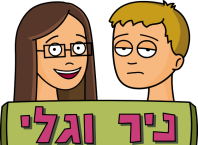Feminist art exploring themes related to male-female identity, sexuality, pornography, or the masculine gaze have long been played out in showy and attention-seeking ways. But as artist and educator Hilla Ben-Ari illustrates in Lacuna, her new exhibition, delicate imagery and a subtle touch can also be extremely effective in putting over a relevant feminist message. In her case it concerns the vulnerability of the female body and the efforts needed by a woman to survive in what is still a man’s world.
Ben-Ari’s world was the kibbutz where she was born and spent her childhood; and her experiences there have been the main source of the art she has created over the past decade. Most memorable, perhaps, was her installation Regulator shown in the group exhibition, Togetherness, the Group and the Kibbutz in the Collective Israeli Consciousness (Helena Rubinstein Pavilion, 2005). There, pseudo-architectural plans marked out on graph paper incorporated paper-cuts of young girls dressed in identical shirts and shorts. Bound together by strings, or in one instance connected to a drainage system as if they were crops, they became part of the ‘soulless’ production line of the kibbutz.

The effort required physically and mentally to conform, fit in and adapt to a constraining environment, is also one of the underlying messages in the video loops featuring young woman gymnasts that are part of Ben-Ari’s new show. In each case, a single figure is engaged in feat of balance, straining and not quite succeeding in holding her pose. In Semi-Circle, leg bandaged, limbs up in the air, the girl’s body is integrated into an arrangement of poles stuck into the earth. This contrast between soft and hard – the contorted and wounded figure vs. the poles – ‘masculine’ and unyielding – occurs elsewhere in the exhibition, as, for example, in the floor–to-ceiling ‘metal’ pillars that Ben-Ari has introduced into the gallery which are actually made from paper.

Memories of the kibbutz also surface in an appealing set of works produced by the laborious technique of cutting, slicing and weaving strips of paper (in an era where many artists employ sophisticated non-manual techniques, this way of working is particularly refreshing). In one picture, a gymnast’s exercise rings appear to float in space; in another, a grain silo takes center stage.
The faint outline of a woman is introduced in several other notable works, among them Chloris (Goddess of Flowers) where a figure looks out onto an abstracted panorama of green fields – an expression, perhaps, of the artist’s fading memories of her early life on the kibbutz.

Binding together Ben-Ari’s video pieces which speak of strength and frailty, disability and tension, is the work entitled The Patient, in which the figure of a woman floating in space, seemingly on the point of vanishing, is nevertheless hemmed in by a device for measuring height. In this and other exhibits in this distinctive show, Ben-Ari succeeds in projecting a sense of detachment – a lacuna – as if the spirit was separating from the female body, its daily strivings, its flaws and weaknesses.
Till June 8th 2012. Gallery 39 for Contemporary Art, 39 Nachmani St. Tel Aviv, Tel: 03. 5666631





